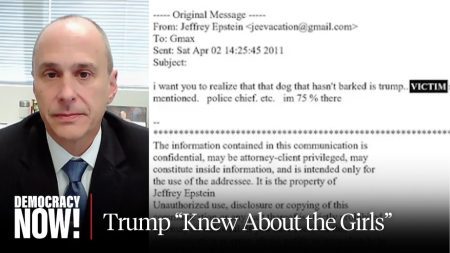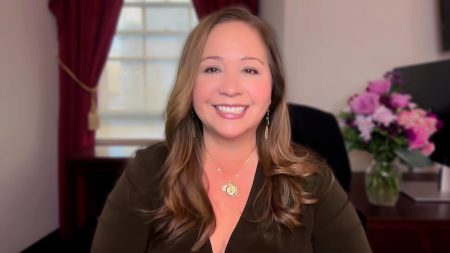Serving the Community with Honor, Integrity, Equality, and Fairness

|
| Asheville’s new Police Chief, William J. Anderson. Photo: Renato Rotolo |
Staff reports
The Urban News met with William J. Anderson recently so that we could get to know Asheville’s newly appointed Chief of Police—and help our readers do so as well.
The Asheville Police Department has been roiled in the past year by an evidence-room scandal and by complaints of unfair treatment. The release last fall of two local men, both black, who had served more than 10 years in prison for a crime they did not commit, only heightened the community’s perception of the police, the sheriff’s department, and the district attorney’s office as biased.
That perception is only intensified by the refusal of some law
enforcement professionals to acknowledge such mistakes, even in the face
of clear, overwhelming evidence.
Some residents, in fact, view the police as an enemy rather than an ally in keeping Asheville safe and equitable.
Many citizens are hoping that having an African American lead the
Asheville Police Department for the first time in its history might help
restore trust between the community and the department. How, then,
would Chief Anderson go about establishing better relationships with the
community at large? How does he plan to rebuild the image—and the
reality—of who the police are in the eyes of the city’s residents?
The chief acknowledges that as a newcomer to Asheville, it will be
essential that he meet with area residents to find out what’s going
on—from their perspective.
“We need first-hand knowledge, so we have to ask questions,” he said.
“We have to learn what has worked, or has not worked in the past. And a
lot of what we do will be based on my past experience. I’ve been in this
business a long time, and have a lot of experience to bring to the
table. However,” he adds, “my advice to drug dealers, and my message to
them, is—‘We’re coming.’”

|
| William J. Anderson. Photo: Renato Rotolo |
He continued, “I plan to be as visible and as interactive as possible,
especially with those communities where there may be problems. I plan to
listen to all communities, not just the ‘problem areas’ but
everywhere.”
Another approach that Anderson discussed is that of deterrence and
rehabilitation for problem youth and unlawful offenders. “Deterrence is a
big part of what we have to do,” said Anderson.
The chief described a program established in Greenville, NC, (his
previous post) called the Pitt County Reentry program, and his active
roll in the inception of the High Point Focus Deterrence Model. Both
programs offered supportive resources from the community at large: help
with jobs and housing, stability, and an educational component.
“A person has to make a conscious decision that they’re not going to
violate the law, and that they want to make a change. We present them
with the options and the resources, but they have to make the choice,”
Chief Anderson said.
He also pointed out that it made a difference that the police
department did not act alone, and the business community played a big
role, as did community organizations.
When The Urban News asked about the potential participation of such
stakeholders as CIBO (Coalition of Asheville Businesses), the Downtown
Business Association, clergy, A-B Tech, the Chamber of Commerce, the
Dept. of Corrections, Western Carolinians for Criminal Justice, ACLU,
and others, he noted, “We did sit around a table, talked about the
problems we faced, what direction we should take, and what we were able
to do. When we reached a consensus, we wrote a grant [to implement
programs].”
The Urban News publisher Johnnie Grant raised the question of perceived
harassment by a local citizen. “We (The Urban News) often receive phone
calls from local citizens who [say they] have been harassed by law
enforcement. One caller described himself as a professional can
recycler, and claimed can-recycling as his way of earning a living. He
stated where he has permission to collect cans for recycling, he was
cited by law enforcement for trespassing. On one occasion, he told us,
his bags full of cans were seized and rummaged through by the police. He
was then issued a citation for having open beer containers, because
some of the cans were not completely emptied. He has been stopped by law
enforcement countless times, and had to appear in court—wasting the
court’s time and his limited monetary resources. Those types of actions
by law enforcement spread quickly throughout the community as police
harassment.”

|
| William J. Anderson. Photo: Renato Rotolo |
Chief Anderson immediately invited The Urban News to put the man in
touch with his office. “I think the first thing is, he needs to come
talk to me, and tell me his side of the story. Let me research it, and
find out what’s been going on. Sometimes policies can change, procedures
can change. But first let’s sit down and talk about it.”
He noted that after getting the citizen’s story first-hand, he would
then dig into department records to determine, “Why has this man been
stopped, how many times, and what is making this happen? Maybe we can
change things that we’re doing, maybe he can change some things that
he’s doing.”
Chief Anderson asserted, “I want to see for myself. And I’ll be looking
elsewhere, and all over the city. You may see me in various community
areas observing, accessing, and gathering information for myself.”
“My history has been to have working relationships with all the
communities that we as law enforcement serve. I hope to see some of the
same results here. But change doesn’t happen overnight. It will take a
lot of work on my part to be visible out in the community over time, and
to see some of the things that are happening, to discuss it in the
department, develop training, change perspectives, and so forth. First
we have to identify issues, then take steps to correct them,” said Chief
Anderson. “The only thing I can do is my job. I can only control what I
feel is right and in the best interests of the community and this
department. I don’t play politics; I can be conscious of the dynamics,
but I can only do what is lawful, moral, right, and let the chips fall
where they may.”
Anderson expressed sympathy for those who are—or perceive that they
are—treated differently on account of race or ethnicity, including many
in the Latino community. Anderson was part of a broad-based Latino
initiative out of Raleigh that gathered community leaders to visit
Mexico to try to understand what lies behind the emigration phenomenon.
The initiative traveled to Veracruz to learn why so many people from
that region in particular come to North Carolina. More recently, he
attended a presentation by an Asheville Police Department officer about
having a Hispanic/Latino liaison in the APD. “When this officer made the
presentation here, I was very impressed,” he said.
He also had kind words for the Citizens Police Advisory Committee, with
whom he met during his first week in office. “I will be meeting with
them again soon. They are very active and very involved. And we’ll be
meeting next about specific goals and objectives that we can
accomplish.”
Asheville’s first African American chief of police acknowledged that he
arrives with high expectations from the community: expectations both of
his performance as chief, and in rebuilding the long-fractured
relationships between his department and the community.
The impression Chief Anderson made upon The Urban News staff was that
of a cool, calm professional who will not bend the rules for anyone, but
will apply the law as it is written, and try to do so equitably and
fairly.
Whether equitable treatment is perceived as such by the affected
communities remains an open question for the moment. But as a capsule
portrait, anyone over 50 who meets him will be reminded of Sgt. Joe
Friday, interested in “just the facts, ma’am”; younger residents can
only hope that he is able to meet those high expectations.








